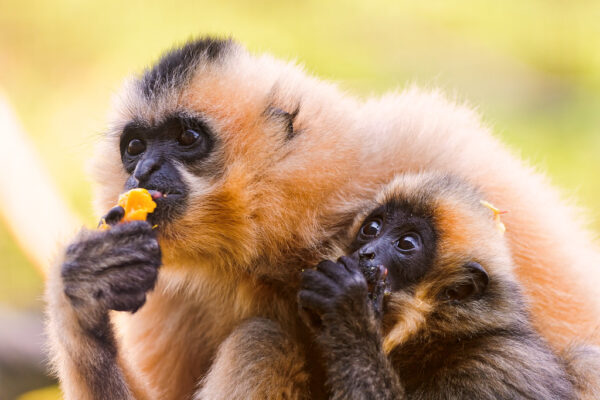Gibbons, also known as lesser apes, are small primates found in the tropical forests of Southeast Asia. They belong to the family Hylobatidae and are distinguished from great apes by their smaller size and low sexual dimorphism. This profile will provide a detailed overview of gibbon characteristics, including scientific name, physical traits, life span, habitat, diet, reproduction, conservation status, and interesting facts.
Scientific Name
The scientific name for gibbons is Hylobatidae.
Physical Traits
Gibbons have long coats ranging from black to brown to white. They have no tails, and their arms are longer than their legs. Their hands and feet are adapted for brachiation (swinging from branch to branch).
Life Span
Gibbons typically live between 15-30 years in the wild and up to 45 years in captivity.
Habitat
Gibbons can be found in the evergreen tropical rainforests and monsoon forests of Laos, Vietnam, and southern China. They spend most of their time in trees, where they swing from branch to branch using their long arms.
Diet
Gibbons primarily eat fruits but also consume leaves, flowers, and insects.
Reproduction
Gibbons usually mate for life with one partner at a time. The female gives birth to one infant after a gestation period of about seven months. The infant depends on its parents for up to two years before it can fend for itself.
Conservation Status
The International Union for Conservation of Nature (IUCN) lists all species of gibbon as endangered or critically endangered due to habitat loss caused by deforestation and illegal hunting for bushmeat or pets.
Interesting Facts
- Gibbons are among the fastest mammals on earth; they can swing through trees up to 35 mph!
- Gibbons use loud vocalizations called “songs” as part of their courtship rituals; these songs can be heard up to 1 mile away!
- Gibbons are monogamous; they form strong social bonds with their mates that last throughout their lives!


